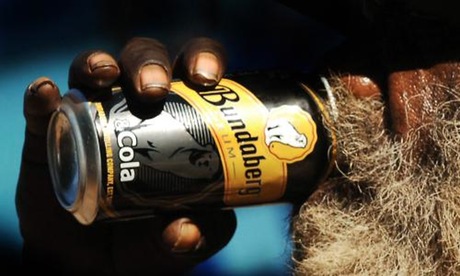
Indigenous Australians between the ages of 35 and 54 are up to eight times more likely to die than their peers, with alcohol abuse the main culprit, South Australian research has shown.
The director of the Aboriginal Drug and Alcohol Council of South Australia, Scott Wilson, said fewer Indigenous people drank alcohol than in the wider community, but those who did drink did so at levels harmful to their health.
Alcohol was associated with 40% of male and 30% of female Indigenous suicides, he told the Victorian Alcohol and Drug Association biennial conference on Friday.
The death rate for Indigenous Australians between 35 and 54 was between six and eight times higher than that of the wider population, he said, with half of male deaths and four out 10 female deaths occurring before 50.
Alcohol and other drugs were having a heavy impact on Indigenous life expectancy, and measures such as “dry zones”, which banned alcohol in areas where people congregated to drink, were stopgap strategies that only harmed people in the long run, Wilson told Guardian Australia.
“People caught drinking in dry zones are fined, and we are talking about transient and homeless people with drug and alcohol problems,” he said.
“They can’t afford to pay, and before you know it the fines build up and they end up in prison. I know of one person who now has in excess of $7,000 in fines from being caught drinking in a dry zone, and it’s likely he will end up in jail.
“Dry zones just drive people further out into the margins or put them in jail, and don’t do anything to help people.”
Wilson found engaging Indigenous people with substance abuse problems and supporting them worked, even though this often took a long time.
His organisation began running a weekly barbecue for Indigenous people in Adelaide, a small gesture which nonetheless gave people something to commit to, he said.
“We had a heroin user who, after a number of years of talking to us at these barbecue events, used less and less and saw us more to talk through his problems,” Wilson said.
“He’s now an associate lecturer at a university.
“In another case, we took a chronic alcoholic on a camping and fishing trip and … it was the first time he’d done anything like that before. When he realised he could do these things too, his appearances in the parklands drinking became less and less, because he was off doing these activities more.”
Wilson said governments were not innovative or adventurous enough to address the problem, despite the devastating effect of drugs and alcohol on Aboriginal and Torres Strait Islanders.
“Three-year funding cycles associated with elections don’t cater for these kinds of initiatives,” he said.
“Governments used to be more adventurous and you’d get funding to give small programs like this a go, but these days you don’t get that sort of funding unless it’s for something tried and proved.”
An Indigenous unemployment rate of 38% (and 50% among young people) helped drive people towards alcohol and other drugs, he said.
“Only 33% of Aboriginal and Torres Strait Islander kids complete school compared to the national average of 77%,” Wilson told the conference.
A review of alcohol misuse in the Northern Territory, published in the Journal of Ethnicity in Substance Abuse and led by Charles Darwin University, identified alcohol abuse as a major public health concern among Aboriginal and Torres Strait Islander people.
Indigenous people in the Northern Territory consumed about 16.9 litres of pure alcohol a year, the researchers found, compared with 10 litres in the general population. That led to a series of physical and social consequences, the authors concluded.
The review called for “culturally appropriate intervention approaches”.
One author, Dr Rama Jayaraj, has been working with Indigenous patients for seven years and said much of the funding allocated to address drug abuse went towards “white, western treatments”.
“For example, talking treatments like psychology and cognitive behavioural therapy,” Jayaraj said.
“This is applicable to the white population, but in in our population, many people are hesitant to engage with this. Some of them are illiterate, their education is primary school level, and they can’t understand these techniques being used.
“But they do respond when an Indigenous person is involved in the conversation, then they do open up. We just don’t have enough Indigenous mental health workers here.”
